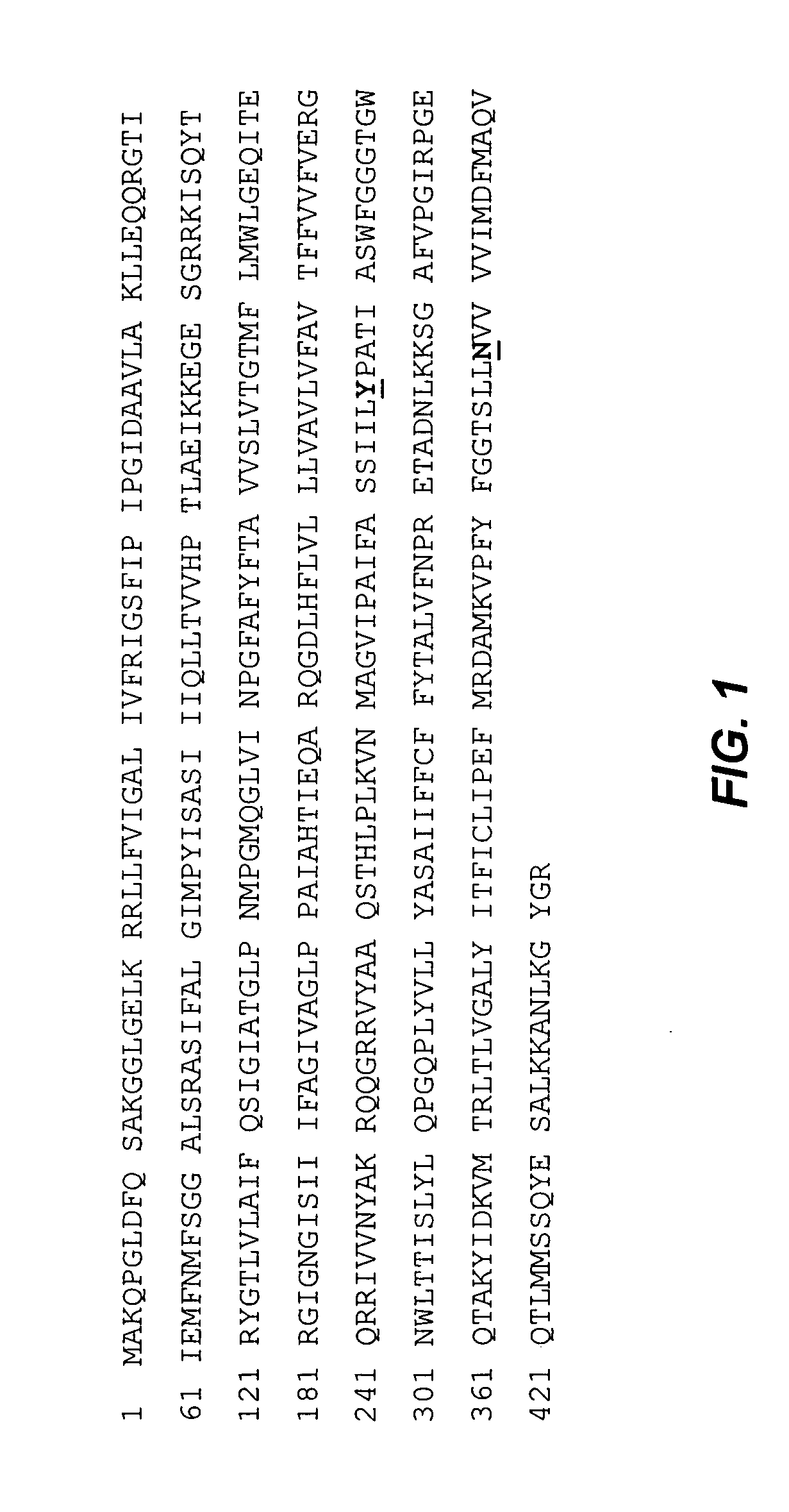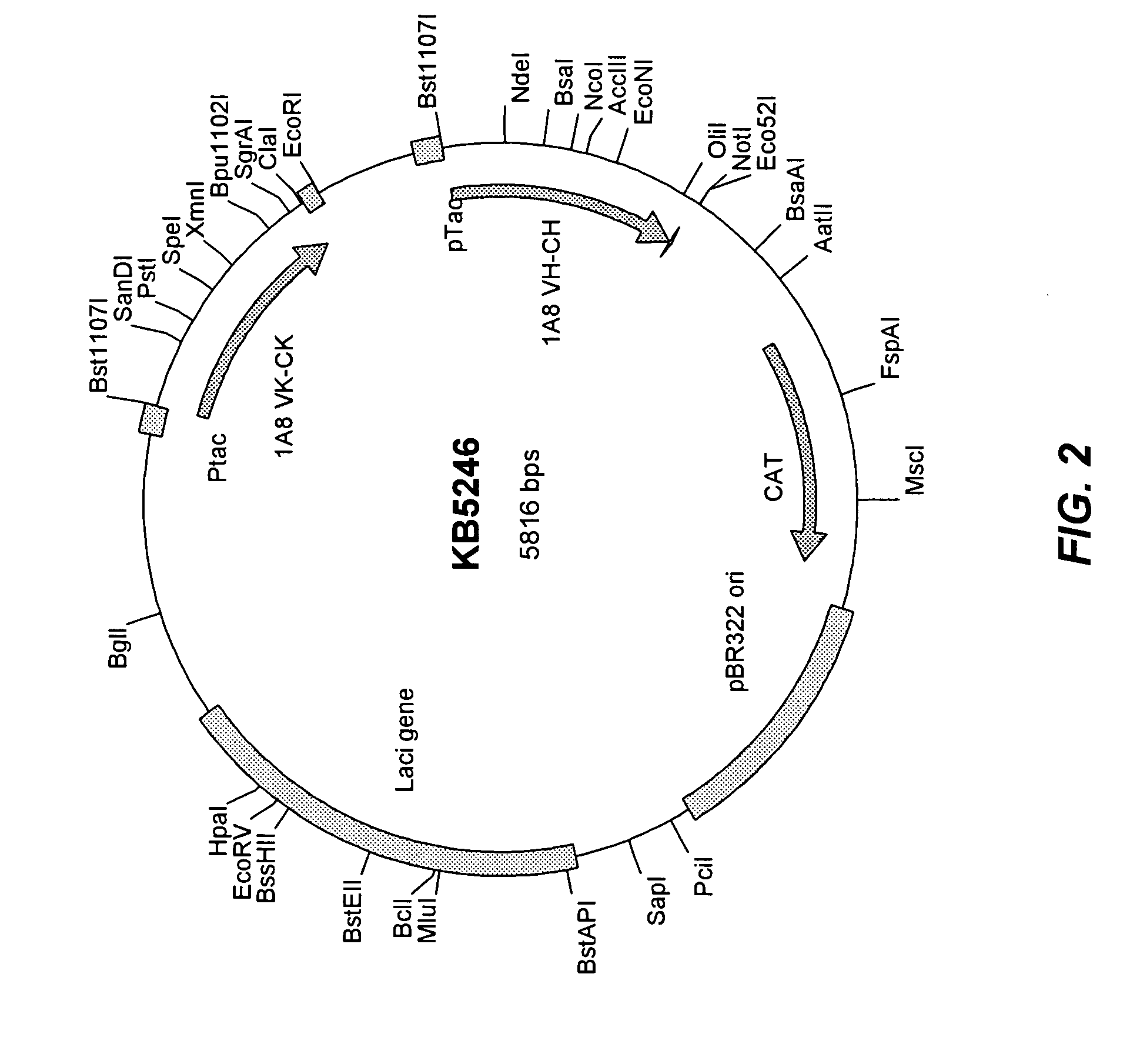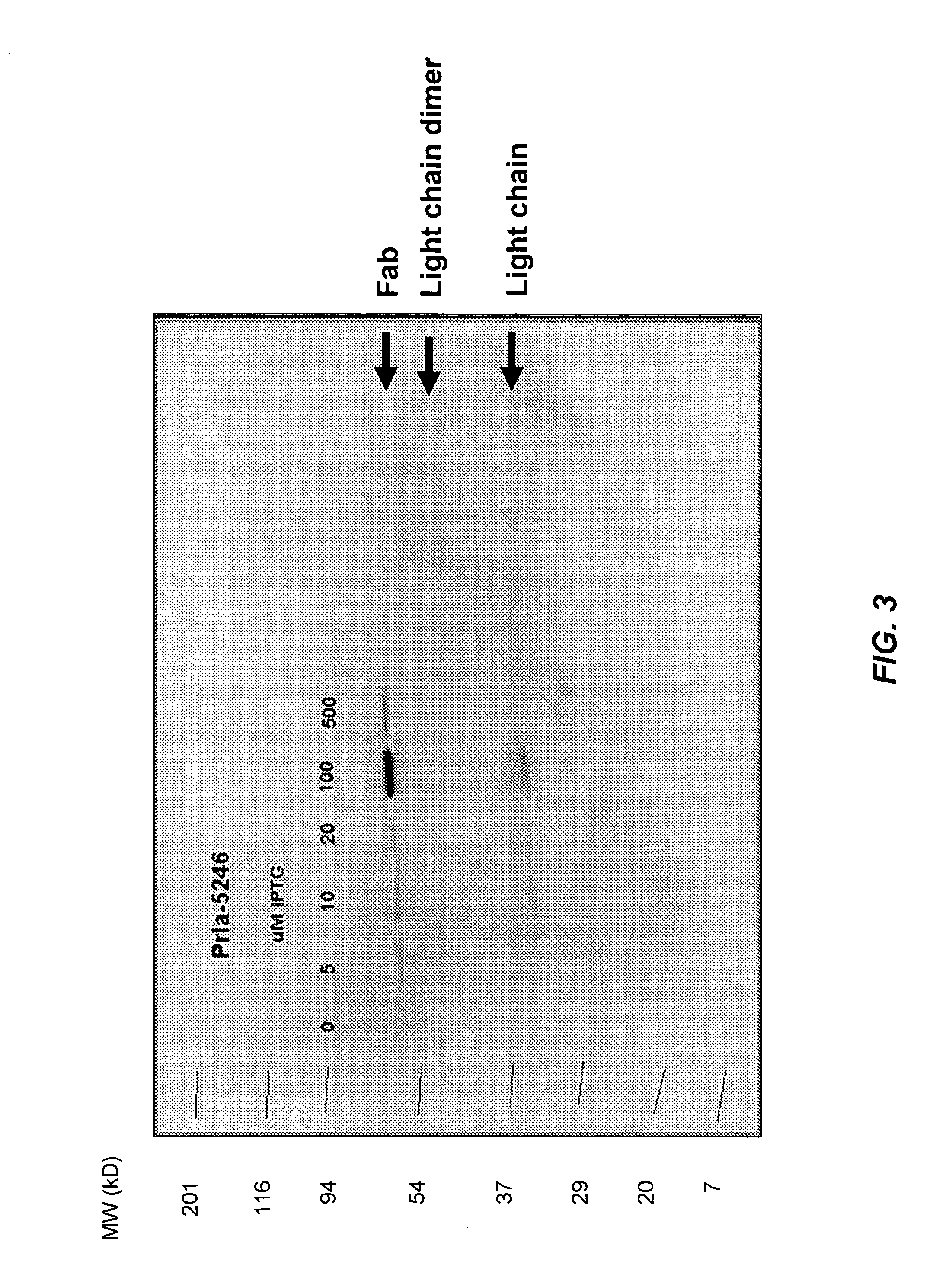Secretion of antibodies without signal peptides from bacteria
a technology of signal peptides and antibodies, which is applied in the field of secreting antibodies, antibody fragments, or antibody related polypeptides from prokaryotes, can solve the problems of compromising antibody function, affecting the function of antibodies, and affecting the quality of antibodies
- Summary
- Abstract
- Description
- Claims
- Application Information
AI Technical Summary
Benefits of technology
Problems solved by technology
Method used
Image
Examples
example 1
Expression and Secretion of Human Anti-PcrV Fab Fragment Without Signal Peptides
[0169] The Fab fragment of human antibody 1A8 was expressed and secreted from E. coli mutant prlA4 without signal peptides. Fab 1A8 is an engineered human antibody fragment which binds specifically to an epitope on the PcrV protein of Pseudomonas aeruginosa with high affinity. It competes for binding with a mouse antibody Mab 166 identified to the same epitope (Frank et al, 2002, J Infect Dis. 186:64-73). The light chain of 1A8 consists of a Vk1-kappa light chain and the Fd chain is a VH3 sub-class V-region fused to an IgGl CH1 domain.
[0170] A signal-less expression vector for the expression of Fab 1A8 was derived from pGEX-4T-1 (GE Healthcare) as follows. The Ampicillin-resistance gene in pGEX-4T-1 was deleted by digestion with AatII and AlwNI, and was replaced with a Chloramphenicol resistance gene obtained by PCR amplification from plasmid pACYCDuet (Novagen) to form pGEX-CAT. A point mutation of T ...
example 2
Detection of Antigen-Binding Fabs by Colony-Lift Binding Assay (CLBA)
[0185] Libraries of antibody Fab fragments cloned in plasmid KB5246 and transformed into SE6004 are plated onto 2YT agar (Becton, Dickinson DifCo™ 2xYT yeast extract tryptone medium) containing the appropriate antibiotic (chloramphenicol at 34 μg / ml). The plating efficiency is adjusted so the resulting bacterial colonies are discreet but dense enough to maximize the area of the plate. Various sizes of plate are used depending on the number of clonal colonies to be screened. Thus, at optimal density a 10 cm diameter plate contains 4000 colonies, a 15 cm diameter plate contains 10000 colonies and a 25 cm square plate contains 50,000 colonies.
[0186] Nitrocellulose filters (Schleicher & Schuell BA85) of diameter 8.2 cm, 13.2 cm or 20 cm square are pre-coated with antigen in Phosphate Buffered Saline (PBS) at an empirically determined concentration (usually between 0.5 and 20 μg / ml). The volume of coating solution dep...
example 3
Detection of Anti-PcrV Fab Secreted from prlA4 Cells Without Signal Peptides Using CLBA
[0192] For Fab fragments expressed without signal peptides in plasmid KB5246, transformed cells were plated on 2YT expression plates containing chloramphenicol (34 μg / ml) and 10 μM IPTG. Cells were induced for 16 hours and antibody fragments binding to GST-PcrV on the antigen-coated filter were detected as described in Example 2, using a goat anti-human kappa antibody—Horseradish peroxidase conjugate (US Biological) at a dilution of 1 / 5000 in PBST. After four 15-minute washes and the application of ECL Plus (GE Healthcare), the filters were used to expose autoradiographic film (Hyperfilm from GE Healthcare).
[0193] Plasmid KB5246, expressing Fab1A8, was transformed into SE6004 cells, which have a mutant SecY gene (containing the prlA4 mutation), and into TOP10 cells which contain a wild type SecY gene. Positive colonies secreting Fab1A8 were detected in the PcrV antigen-CLBA only from SE6004 tran...
PUM
| Property | Measurement | Unit |
|---|---|---|
| Light | aaaaa | aaaaa |
Abstract
Description
Claims
Application Information
 Login to View More
Login to View More - R&D
- Intellectual Property
- Life Sciences
- Materials
- Tech Scout
- Unparalleled Data Quality
- Higher Quality Content
- 60% Fewer Hallucinations
Browse by: Latest US Patents, China's latest patents, Technical Efficacy Thesaurus, Application Domain, Technology Topic, Popular Technical Reports.
© 2025 PatSnap. All rights reserved.Legal|Privacy policy|Modern Slavery Act Transparency Statement|Sitemap|About US| Contact US: help@patsnap.com



